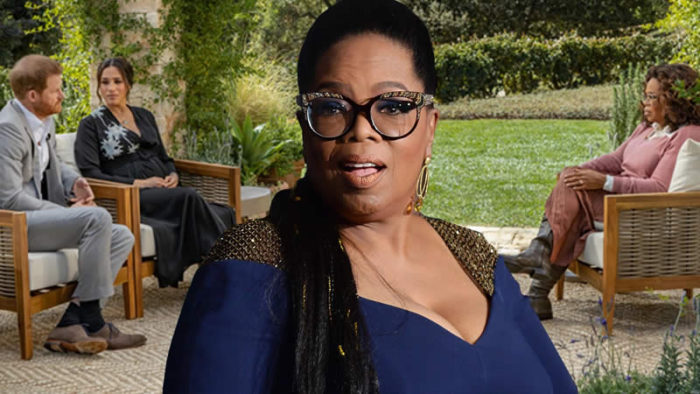“What?” asked Oprah. “Who is having that conversation with you?” That initial “what” is near perfect, a wide-eyed piece of punctuation that created a moment for the shocked audience to comprehend what they’d just heard. Oprah – a member of the so-famous-a-surname-is-surplus club – understood that speeding up the Wild World of Windsor narrative, to claw for revelations, was the wrong approach. Instead she slowed it down. The “what” made viewers reflect, before the follow-up “who” set them off again.
Despite all the complex analysis and point-scoring that came from an estranged prince and his American wife throwing down on their estrangement from one of the world’s defining institutions, the real winners were readily apparent: Oprah and the too-rare spectacle of the tell-all exclusive television interview. In an era of micromanaged statements released through personal Instagram accounts, this was the triumph of the world is watching broadcast.
With a capital city total of 1.78 million viewers in Australia, Ten’s prime-time transmission was a ratings juggernaut – even the current weekly champion, Nine’s Married at First Sight, couldn’t get close to it. In the streaming age, Oprah with Meghan and Harry – note the billing – was a traditional free-to-air hit, both here and in America, where the CBS network telecast it to approximately 18 million viewers.
The rights to the Mr and Mrs Sussex sit-down were held by Oprah’s production company, Harpo, and her mandate was clearly to get it to a mass market. That should be a dictate that the free-to-air broadcasters take to heart: the right exclusive interview can bust open audience interest, and whoever can secure – or concoct – the next big two-hour special could profit. It would be hard to match the interest level of this special, but even drawing a majority of that figure would constitute a major success.
It’s an oft-noted fact that the largest ratings successes in this country are exclusive live sporting events, and Oprah with Meghan and Harry was the celebrity equivalent of that; a grand-final after a season several years long and stoked by constant headlines (plus some cutthroat elimination semi-finals). Free-to-air networks need to look at turning their best interviews into standalone news specials that air in prime-time – that’s got to offer better odds than banking on the next Ultimate Tag.
The trickier question is who will conduct these interviews? The high-profile sit-down is rarefied air, the Mount Everest of television interviewing. In the United States Oprah wasn’t just the obvious choice for Harry and Meghan, she was close to the only one. The ranks of contenders are thin, with the few contenders not having the experience of British legend Michael Parkinson, for example, who handled Ian Thorpe’s 2014 interview on Ten where he came out as gay and discussed his mental health and alcohol abuse issues.
Parky is 85 years old now, while Oprah is 67. In Australia Andrew Denton has long flown the flag for the one-on-one interview, although he couldn’t duplicate the impact of Enough Rope, which had a successful run on the ABC between 2003 and 2008, with Andrew Denton’s Interview, which had seasons on Seven in 2018 and 2019. Notably, however, the show went out on a high, with the final episode – a post-politics clearing of the air with former foreign minister Julie Bishop – drawing the program’s largest audience of either year.
It’s a reminder that everything has to come together for the high-profile interview to be a hit: the right subjects, the right moment, and the right interviewer. Oprah’s technique, with those perfectly played reaction shots that launched a million memes, the gently conspiratorial follow-up queries, and a ready empathy, helped make Meghan and Harry’s confessions into historic revelations. Oprah with Meghan and Harry provided numerous answers, but it also created a crucial question: can the demand it tapped into be duplicated?


